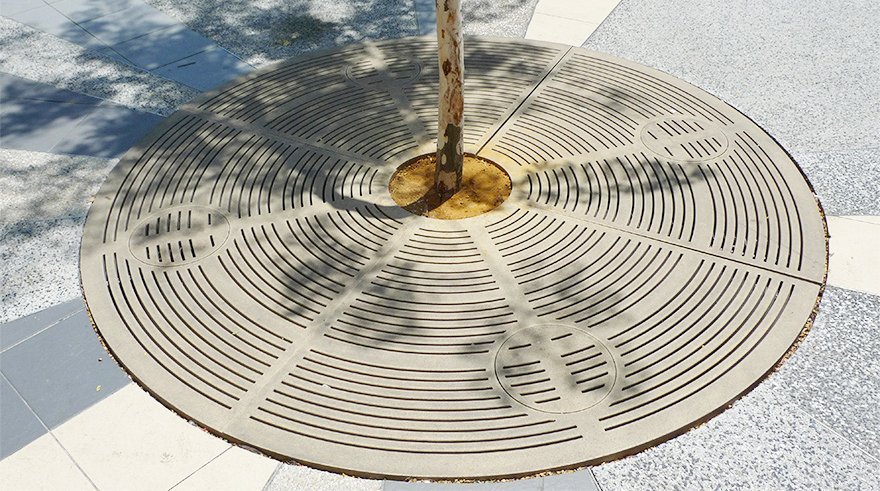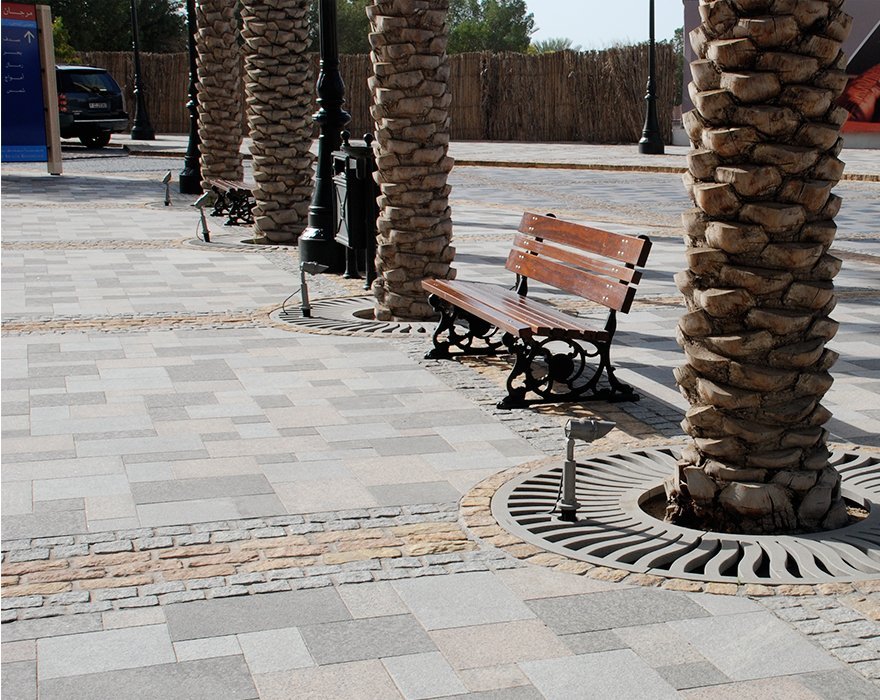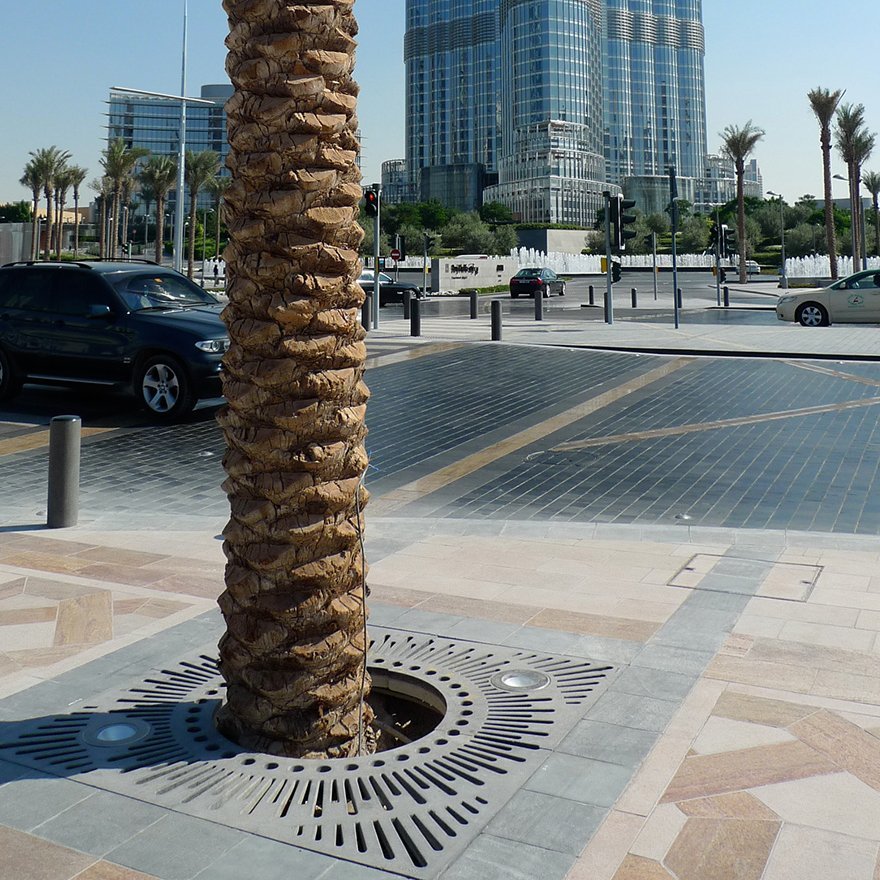While trees in forests and woodlands grow in near-perfect natural conditions, trees grown in an urban setting have to endure unique circumstances. This includes everything from obstructive pavements to vandalism to high temperatures due to urban microclimates and even exposure to artificial elements like exhaust fumes and de-icing salt.
When tree grates are incorporated, they allow the trees growing in these urban spaces to integrate a lot more seamlessly with the rest of the landscape. They protect the trees from the severity of the urban environment, tremendously increasing the tree's lifespan.
The types of tree grates to be used in an urban setting should take into account several factors, such as tree root management, irrigation and aeration options, and guying systems. This goes a long way in ensuring that they integrate a lot better with their environment.
Tree grates today come in a variety of materials, including metal, stone, and plastic. This article highlights some of the ways that tree grates can make a difference in your landscape.

Here are some of the ways tree grates improve your landscape:
Tree grates keep trees alive
As has already been mentioned, tree grates play a vital role in ensuring that trees planted in urban spaces stay alive for longer. In urban settings, where there is a high density of human traffic, it is easy for the soil around the growing trees to get compacted. Compacted soil is one of the reasons why trees grown in urban areas suffer.
When the tree grates are in place, the soil around the trees become inaccessible to human and vehicular traffic. This means that it will not suffer the same level of compaction that exposed soil does, allowing the tree to thrive as a result.
Tree grates help create urban forests in city environments
Whenever tree grates get used, the process of integrating urban forests into the city begins. Tree grates play an essential role in this process in various ways. For example, they help allocate space for trees while also allowing continuous pedestrian traffic flow over the area where the trees are. They also prevent litter buildup and boost the growth of the trees by suppressing weed growth.
Tree grates allow for urban design versatility
Tree grates come in many shapes, sizes, finishes, and designs. There is an option to suit every tree pit design. The versatility of the materials that they come in, such as metal, stone, or plastic grates, further gives landscape designers a more extensive array of options. They can even be custom made to any design specification.

Tree grates enhance the aesthetics of the landscape
Well-designed tree grates can be very aesthetically appealing. With adaptable designs that come in all sorts of ornate shapes, they create interesting focal points that break the monotony of the urban space.
Although decorative metal grates are extremely popular today, there are experiments in various parts of the world that could see the materials tree grates come in changing soon. Materials like plastic, recycled tires, stone, and silicone are already in use. With time, we might see renewable sources like bamboo and cork come into play, as well as 3-D printed tree grates.
Tree grates add character to the landscape
Besides being just aesthetically appealing, tree grates can also breathe life and character to urban spaces. This can go a long way in turning a specific area into a vital way-finding tool for pedestrians. When an urban space is identifiable due to its elements, it resonates more with its users. They can identify it quickly, enhancing their overall experience of the urban space.
Other things to keep in mind when installing tree grates
As you incorporate tree grates into your landscape design, there are several factors that you need to keep in mind. Here are some of them:
- The existing site parameters and existing design elements: You have to decide whether to work with them, work around them, or ignore them completely.
- Access requirements: This influences the size, design, and material of the grates that you eventually end up using.
- Vehicular traffic: What sort of vehicular traffic do you anticipate? If vehicles are going to go over the space allocated for the tree grate, you need to make sure that the grates you use can support their weight.
- Disabled access: This determines the design patterns and slits that go on the grates. You do not want anything wide enough for a wheelchair wheel to go through.
- Personal judgments and aesthetic choices: At the end of the day, personal preferences, along with the client's unique needs, have the most significant influence on the sort of grates you eventually end up using.
Another thing that needs to be well-thought-out and planned before the tree grate is installed is the soil underneath the grate and whether it will be sufficient for the tree. This is a growth issue. The soil immediately under the grate and its surrounding hardscape needs to offer the tree enough space for it to spread its roots.
Usually, if a tree's roots cannot grow down due to an obstruction of some sort, they will grow up. This is the main reason why some sidewalks and roads get pushed up or cracked by roots. In the end, the growth and longevity of the tree, the aesthetics of the surrounding space, and the people's safety will all suffer.
So, how much space should you allocate for the roots? Well, it depends on the species. However, generally speaking, trees with adult canopy diameters of 20 feet will need a pit that is 10 feet by 20 feet and at least 3 feet deep. Most small trees will do well in small cavities of 4 feet by 4 feet by 4 feet deep. This should be enough to keep the surrounding hardscape from buckling.

Final Thoughts
Finally, as you can see, the right use of tree grates can make a huge difference in your landscape. In an urban setting, they will enhance not only the life of the tree but also the overall experience of space users. While the average pedestrian may not be able to put their finger on the actual reason why they appreciate the space so much, the magic lies in the subtleness of the details around them, such as the placement and patterns of the tree grates.










